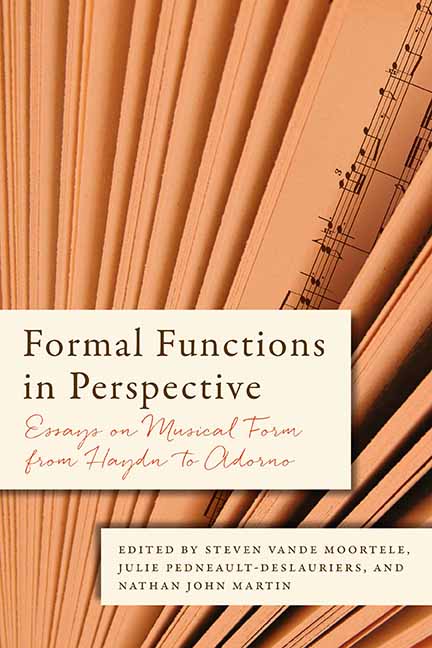Book contents
3 - Formal Type and Formal Function in the Postclassical Piano Concerto
Published online by Cambridge University Press: 26 May 2021
Summary
William E. Caplin's theory of formal functions offers one of the most substantial accounts available of the formal strategies of Viennese-classical instrumental music. Elaborating and modernizing the Formenlehren of Arnold Schoenberg and Erwin Ratz, Caplin formalizes the conventions bridging the gap between the whole-movement forms that are the habitual starting point for architectonic theories and the motivic processes underpinning Schoenbergian concepts of developing variation. In so doing, he mediates skillfully the atomistic and global perspectives characterizing what Mark Evan Bonds calls the “generative” and “conformational” attitudes into which much nineteenth- and twentieth-century formal thinking divides, supplying a syntax (to borrow a linguistic metaphor that Caplin himself adopts) arising from the vocabulary and grammar of tonal melody and harmony, from which whole-movement forms are constructed.
Caplin's theory however raises two obvious questions. First, it compels speculation about the ubiquity of his Viennese syntax: would the theory look the same if it were grounded evidentially in (for example) the music of Boyce, Clementi, and Dussek rather than Haydn, Mozart, and Beethoven? Second, we might wonder about his theory's historical reach: is a comparable theory of nineteenth-century syntax possible, and if so, then to what extent does it maintain Viennese-classical conventions?
This chapter furnishes a tentative, generically restricted response to the second of these questions, and a somewhat historically tangential response to the first, by examining the functional syntax of a geographically disparate but formally consistent repertoire, namely, the postclassical piano concerto, paying special attention to first-movement form. My remit is both theoretical, in that I aim to devise a model for understanding syntax in an as yet sparsely investigated body of music, and historical, in that I hope to use this model to build a coherent picture of concerted practice in a particular phase of its development.
My historical purview spans two revolutionary watersheds, beginning with Dussek's concerti composed after the French Revolution of 1789 and ending with Liszt's two piano concerti, conceived in 1839–40 but brought to their final form between 1848 and 1855—that is, in the aftermath of the 1848 revolutions. This is not to pursue any direct analogy between the genre's development, its cultural-political circumstances, and concomitant theoretical issues, although I recognize the musicological value of such a project.
- Type
- Chapter
- Information
- Formal Functions in PerspectiveEssays on Musical Form from Haydn to Adorno, pp. 77 - 122Publisher: Boydell & BrewerPrint publication year: 2015
- 9
- Cited by



